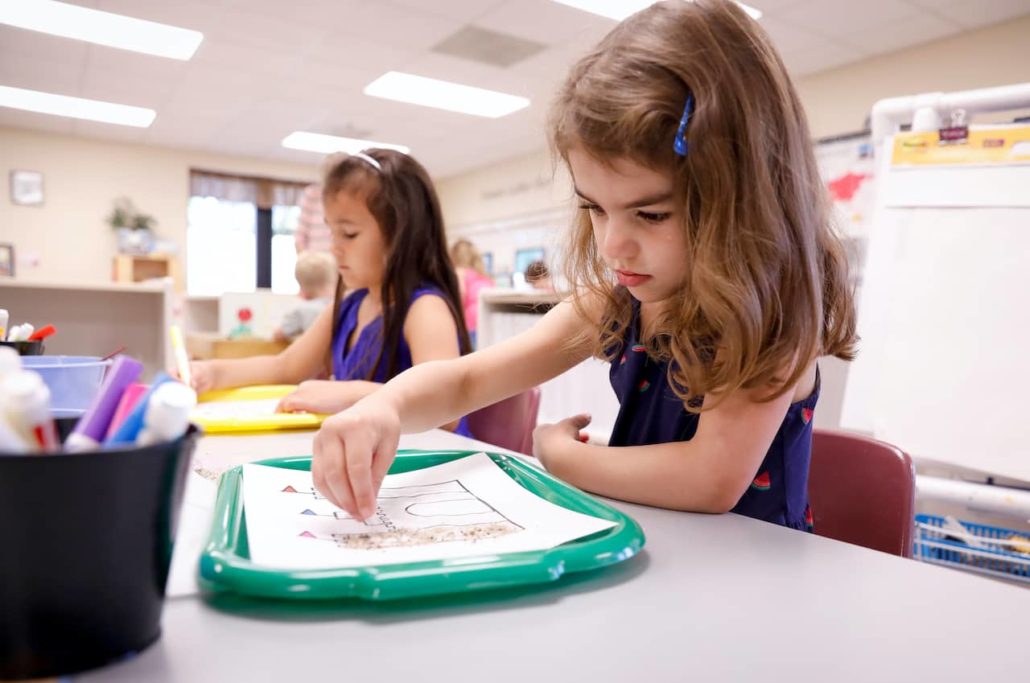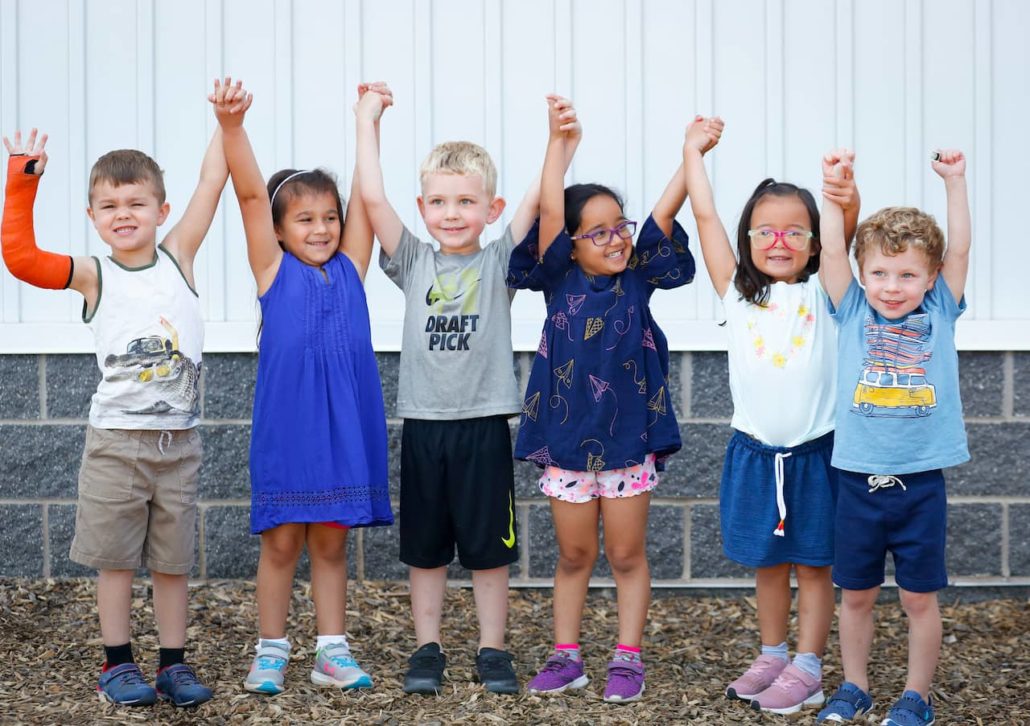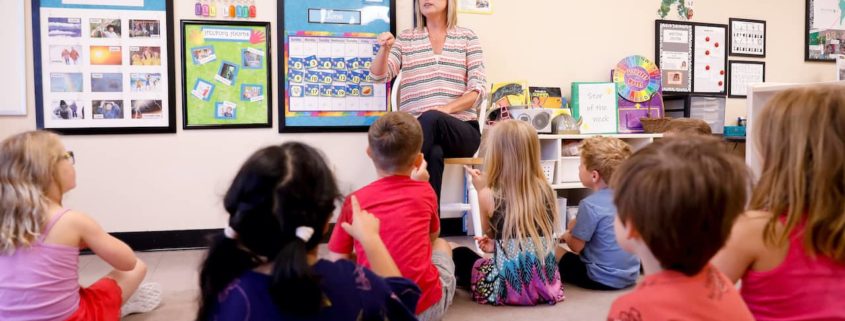It is the dream of every parent that their kids get the best education possible. The journey of enrolling a child in school begins from when a child is six weeks to around age three. This period is significant in a child’s development, and you need to be mindful of the type of school you choose for your kid. Education serves as the main building block upon which children form a unique view of the world.
Before you start your search for a preschool program, make sure you evaluate the needs of your child. This will help you understand your child’s learning style so that you can find the appropriate school setting for their needs.
Let’s take a look at several types of preschool programs to help you find the right one for your child.
Types of Preschool Programs: What to Know
Making the decision of which type of preschool to send your child to is no easy feat with so many options. We’ll break down the common types of preschools you’ll likely be choosing from and discuss the philosophy behind each one.

Academic/Play-Based
Many preschools offer learning in an academic and/or play-based environment. These schools work to educate children while they are having fun to create a lifetime love of learning. Most of these preschools offer a theme-based curriculum, but schools in the Cadence Education family of schools use a skills-based curriculum.
The Ascend Curriculum is a skills-based curriculum developed by Cadence Education that nurtures a child’s creative, social-emotional, cognitive, and physical skills and abilities through intentionally designed materials and activities. This type of preschool curriculum provides a balance of flexibility and structure that allows teachers to create individualized learning for every child.
This skills-based learning environment combines teacher-guided activities with learning center-based experiences, creating more opportunities for personalized interactions between teachers and students. Children in this personalized learning environment are more engaged with what they’re learning while still having fun. This creates a lasting foundation of confidence and a passion for lifelong learning that helps children succeed.
Children in the Ascend Curriculum also have opportunities to take charge of their learning by creating their projects. This helps children develop important skills and creates a foundation of confidence, independence, and creativity that allows them to succeed in Kindergarten and beyond.
Montessori
The famous Italian physician Dr. Maria Montessori developed the Montessori approach in 1897. This system encourages teamwork amongst preschoolers and uses specially designed tools to foster education. In the Montessori system of learning, children work in groups or independently. But the general idea is to harness children’s skills to see how they contribute to a larger unit.
A Montessori preschool offers a unique approach to education. Unlike a traditional setting, the Montessori philosophy emphasizes self-motivated growth for children through individualized education. This system promotes independence and builds confidence. It also encourages social, cognitive, and emotional development in children. The entire learning process is often goal-oriented.
In this type of preschool setting, children learn at their own pace through the variety of more practical activities placed around the classroom. Instead of instructing on a set curriculum, teachers serve as more of a guide to help each student through their desired learning method. Schools that apply the Montessori system use Q&A sessions and after-school activities.
Waldorf
Waldorf learning uses a system of approach that dwells on intellectual experimentation. Rudolf Steiner developed this system in the early 20th century. Waldorf education builds each student’s intellect in arts and practical skills.
The Waldorf preschool philosophy concentrates on the development of each child as a well-rounded individual. It takes a more philosophical approach and doesn’t depend on a particular curriculum. Schools that adopt this system can develop their style and method of teaching. Continuous testing forms part of the everyday life of a typical Waldorf school. Waldorf customizes its curriculum to fit each child’s ability. This type of preschool achieves this through a variety of activities in a mindful, artistic, and practical environment. Your child will grow physically, emotionally, and intellectually in this preschool setting.
It extends beyond preschool level up to the twelfth grade. A typical day of a child would include collaborative learning and personal contribution. Waldorf promotes active participation rather than passive learning through individual participation. It usually works well in small classrooms where the teacher can watch over each child.
Reggio Emilia
The Reggio Emilia Approach strives for accountability on the part of each child. Pedagogist Loris Malaguzzi developed this system after World War II in Italy. The idea is that each child is a part of a unit and should function with that unit.
This system teaches children to develop their potential and operate within their unit. Another drive behind this system of education is inculcation. It believes that a child is a natural subset of humanity and should learn through all facets. More than 140 countries use this philosophical learning style.
Collaboration is key in a Reggio Emilia preschool. This preschool philosophy centers on the freedom for each child to express themselves and unlock their inner potential. This type of preschool aims to encourage children to be strong, independent, and capable on their own. With a Reggio Emilia approach, you’ll have a more hands-on experience with your child’s education. The saying “it takes a village” is highly applicable to this preschool type.
The premise of the Reggio Emilia approach includes:
- The environment as the educator
- Visible learning and knowledge process
- Co-ordinating group educational practices
- The direct involvement of families
- The day-to-day presence of a plethora of expert educators working with children
- The atelier and the person of the atelierista
- School kitchens for nutritional supplements.
Religious
Faith-based preschools are a beneficial option if you’d like theological themes incorporated into your child’s everyday life. Each religious preschool has its own unique philosophy based on the type of religion and level of religious integration. However, one of the reasons religious preschools exist is to offer an environment in which students and faculty can openly discuss their religious beliefs and practice their faith. Though the curriculum may not focus entirely on the religious aspect of these schools, they allow for an open conversation and the integration of these beliefs and practices into daily work.
HighScope
Play-based preschools have long since been a top choice for many parents. With the HighScope type of preschool, this play-based curriculum takes on a whole new approach. Children learn through hands-on projects in partnership with their teachers.
The HighScope system of learning creates a conducive environment that encourages curiosity in children. This approach uses learning materials to foster all-around learning in kids. It also encourages interaction amongst peers and adults in the schooling environment.
The HighScope approach came into the limelight more than 50 years ago. It takes a more “doing” approach than actual formal learning, making it practical. With a preschool philosophy that holds play at the center of every educational experience, your child is bound to have fun while they learn.
A typical HighScope learning environment encourages cognitive skill development. It builds social, cultural, and emotional bonds among kids. The classroom is more or less like a community where every single member watches out for one another.
Parent Co-Op
The Parent Co-op type of preschool aims to ensure that parents take part in the learning process of their children. This system allows parents to supervise the kids and sit in on teaching sessions. It enables a community of parents committed to the same goals to interact.
The significant difference between this learning system and others is that a community of parents who share the same philosophy controls it. Parents have a huge say in a child’s education. They can also offer advice or make enormous contributions to the teaching curriculum.
The best part of this learning system is that it creates a strong bond between child and parent. The system teaches children the importance of education. This is due to the level of priority the parent places on it by being present in the classroom.
Bank Street
The final type of preschool covered today is the Bank Street, or Development-Interaction, approach. Cultivated during the 20th century, this type of preschool focuses on the development of the child as a whole (emotionally, intellectually, socially, and physically).
A Bank Street preschool considers both the emotional and intellectual development of each child and accounts for these changes in their curriculum. Students are able to work on material and learn in an environment that accommodates their current stage in life.
Since the developmental stage is such a high focus, these classrooms may be a mix of students of varying ages. Students are placed into environments that match their needs, which means they’ll be socializing and working alongside a mix of peers.

Choosing the Right Preschool
Deciding which preschool to send your child to is a major challenge for many parents. As you begin your search, consider a few of these helpful tips to finding the right school for your student.
- Research each program. Take a look at each preschool’s philosophy, curriculum, and qualifications to determine which preschool program may be best for your child.
- Schedule a tour. Visiting each type of preschool will give you a better feel of where your child will be spending their days. You’ll also have the opportunity to meet with the faculty, discuss the program, and learn what a day-to-day schedule looks like.
- Ask around. Referrals can be an excellent source for understanding each type of preschool. They’ll likely have insight into different programs and tips on handling the transition to this new chapter of your child’s life.
Frequently Asked Questions
How do I know my child is ready for preschool?
This preparation level varies from child to child. However, if you feel that your child is ready to separate from you for the duration of the day and is excited about spending time with peers, you may want to start looking into preschools.
How do I prepare my child for the transition?
Discussing the change in schedule and separation is a great first step in preparing your child for this transition. It may also help your child to visit the school in advance so they feel more comfortable in their new environment on the first day.
What are the pros and cons of having my child attend preschool?
We understand wanting all the information about your child’s education which is why we’ve created a pros and cons list for you! You can read through all of the wonderful benefits and potential disadvantages of sending your child to preschool.
Create Your Child’s Bright Future With Cadence Education
Cadence Education provides an excellent environment that sparks creativity in children and makes learning fun. Cadence uses various types of preschool curriculums, depending on the school you choose. In all cases, preschoolers have unique opportunities to express themselves in unique ways while learning from a caring staff of professionals ready to help your child grow.
The Ascend Curriculum develops a child’s social-emotional, physical, cognitive, and creative abilities. This curriculum helps kids to apply critical thinking to solve intricate problems. It also fosters independence within the schooling environment. Not only does the skills-based Ascend Curriculum foster your child’s independence but it also prepares them for success in elementary school and beyond. In fact, more than 60% of the students at Cadence Education tested at an advanced Kindergarten readiness level thanks to the skills-based curriculum. In the end, the right program for your child should offer an environment where they can learn and grow at their own pace.
Ready to find the right preschool program for your child?
Visit Cadence Education today and find an amazing preschool program near you.

